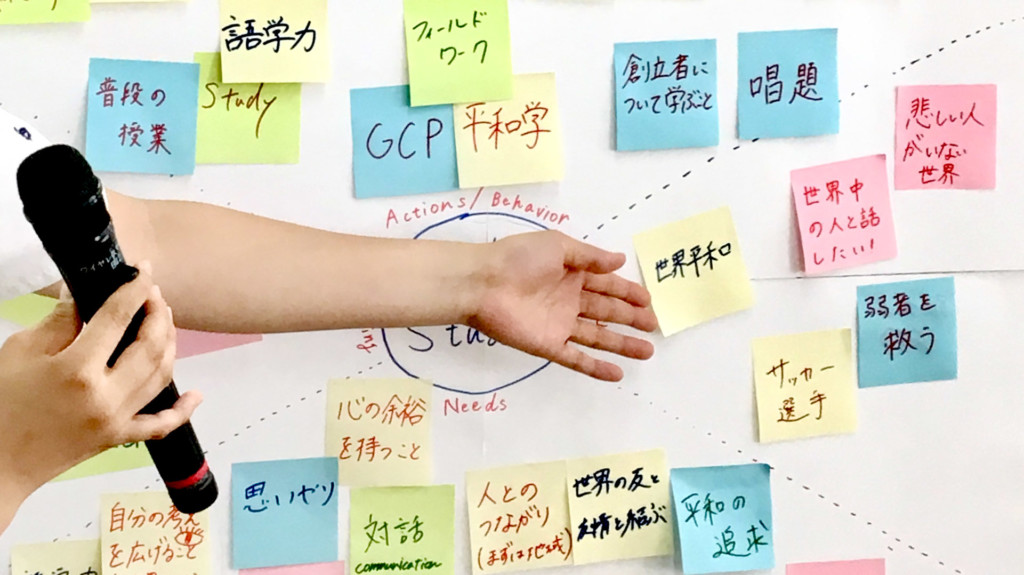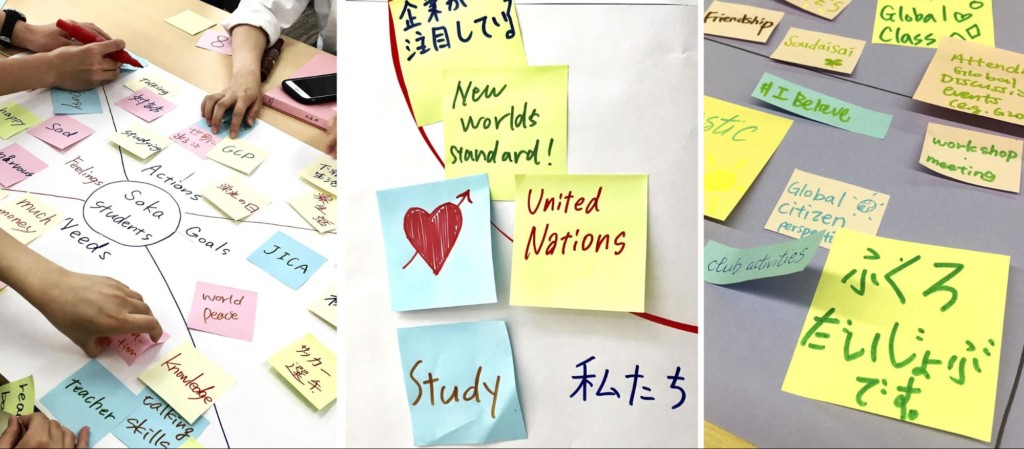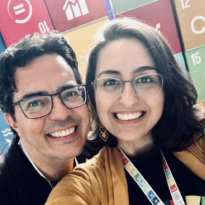Welcome to part 2! If you haven’t read the first part of this report, please start there.
Today, we will report on the initiatives we started after attending the Global Festival of Action – the third edition of the largest United Nations global event for Sustainable Development Goals (SDGs).
UN’s SDGs event in Bonn, Germany.
Is it possible to solve humanitarian problems using Design Thinking? After the Bonn event, we returned to Tokyo – where we currently live – determined to answer this question. Likely, we have all heard of the slogan “think global, act locally“; despite the jargon, we strongly believe that this is, indeed, the first step when putting to practice the intention of designing a desirable future; and that is exactly what we did.
Upon our arrival, we started a project at Soka University, in Japan, where both of us are doing Master’s degrees in International Peace Studies. The “Soka” is a value-creating education; which means value in creation, and in our perception. It is related to social transformation and the human-centred approach. Both of these concepts are widely used in Design Thinking.
Alesse facilitating a Design Thinking Workshop with Soka University’s students.
The project we called “#IamSDGs” is an initiative that, using Design Thinking, aims to mobilise students to think critically about their role in achieving the UN’s 17 Sustainable Development Goals. To date, we hosted five workshops that impacted more than 80 young people from different areas and countries, such as Japan, India, Hong Kong, Korea, Malaysia, Singapore, Indonesia, Italy, UK, Marrocos, Ghana, Brazil, and others.
The multicultural aspects of these students have been essential in our workshops. Diversity is a creative variable to find innovative solutions for complex global problems.
The #IamSDGs initiative welcomes students from different countries to work together in finding creative solutions to change the world.
Soka University’s founder, Dr Daisaku Ikeda, states that “No matter how complex global challenges may seem, we must remember that it is we ourselves who have given rise to them. It is, therefore, impossible that they are beyond our power as human beings to resolve“.
Driven by the challenge “As Soka students, how might we put the UN SDGs into practice?”, we conducted 2-hour-long workshops using the double diamond process.
See below a list of the exercises used in this session:
Japanese students in action.
FIRST DIAMOND – Understanding The Problem
Exercise 1: Time for everyone to be on the same page
Discuss: What are the SDGs? Why are they so important?
Tip: Don’t forget to write your answers down on post-it notes.
Exercise 2: Time to interview and empathise
Write a script with creative questions and walk around to interview the participants from other groups.
Tip: Questions like “What is your suggestion to…” are not good as they can instigate a brainstorming before it is time to do so.
Exercise 3: Time for sharing
Share the main findings with your team.
Tip: Write your findings on post-it notes and cluster similar ideas.
Exercise 4: Time to converge
Summarise the findings in one phrase, and transform into a question.
Tip: Be objective and don’t forget to include the user’s need in your question.
People from various countries co-creating during the session.
SECOND DIAMOND – Creating A Solution
Exercise 5: Time to brainstorm
Think of ideas to solve the problem.
Tip: Go for quantity over quality, and encourage wild ideas. Write one idea per post-it note.
Exercise 6: Time to prototype
Choose one idea and transform it into something visual.
Tip: Learn by doing; just built it!
Some ideas that emerged from the workshop: SDGs CLUB, SDG Connect and SSHub.
Aiming to achieve the United Nation’s SDGs, education, innovation, and value-creation have been the foundation of our initiative. It is time for action and world transformation!
—
Interested in learning the Design Thinking approach? Echos offers three options for Design Thinking courses:
Design Thinking Specialisation
To learn about the double diamond approach and crafting a good challenge; check out the Design Thinking Toolkit.
—
Follow us on social
Instagram – Facebook – LinkedIn – Youtube
How Can We Help?
- For training and Innovation Journeys in your company: check out our in-house course offering.
- For upcoming courses in your region: visit our website.
- For upcoming events in your region: look at our event calendar.
- If you have a special project and would like to use Echos’ consultancy services: send us an email.
- Want to speak to a real person? Call us on 1300 502 006








